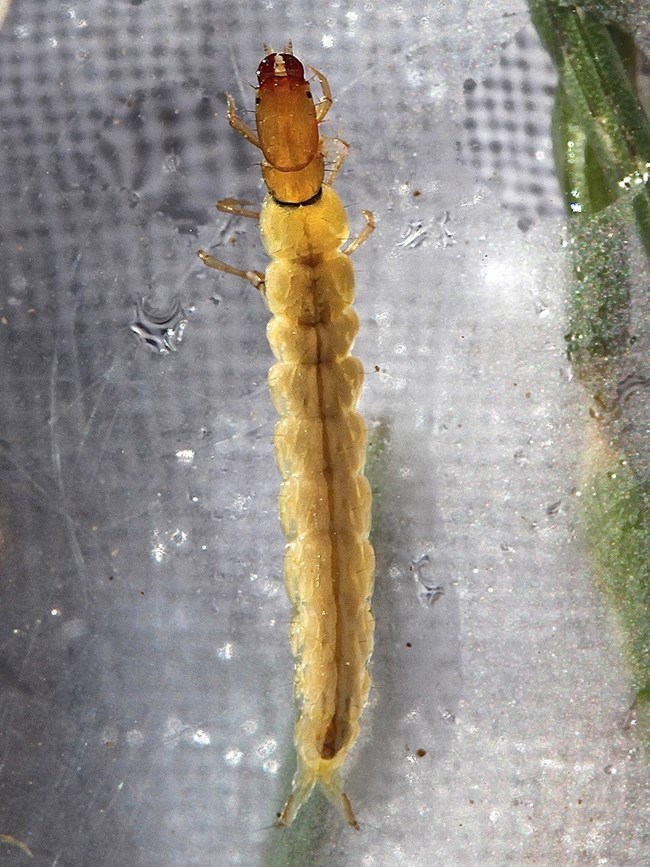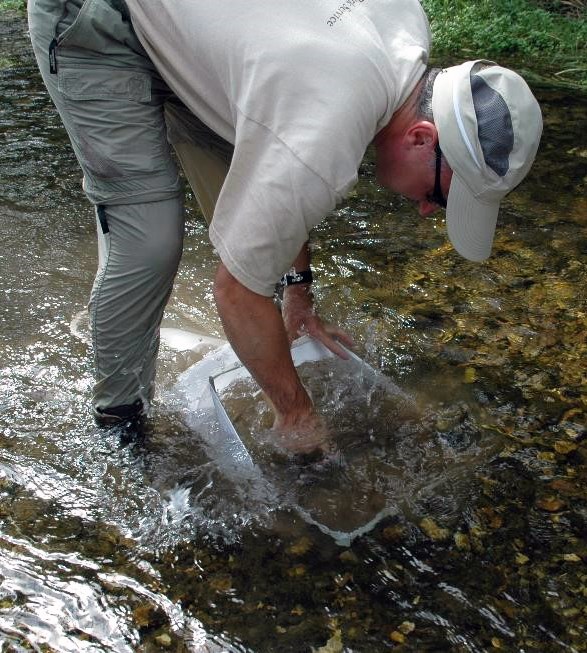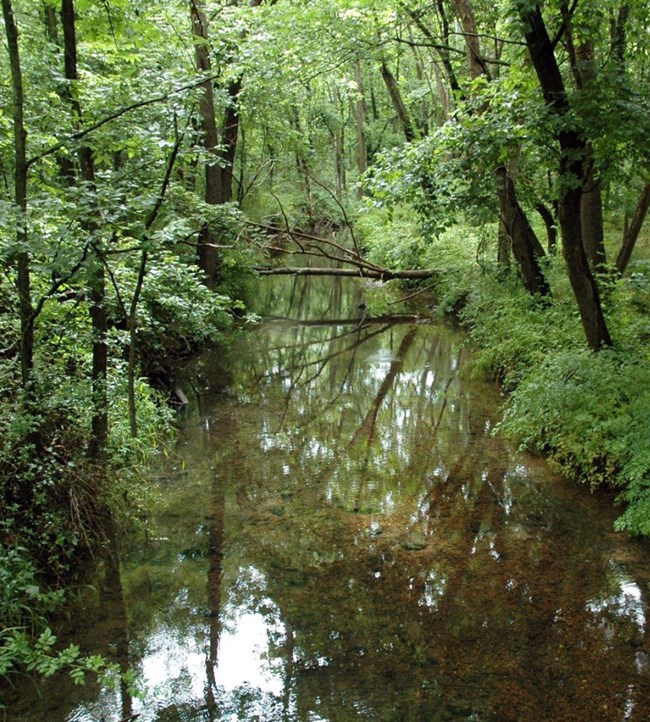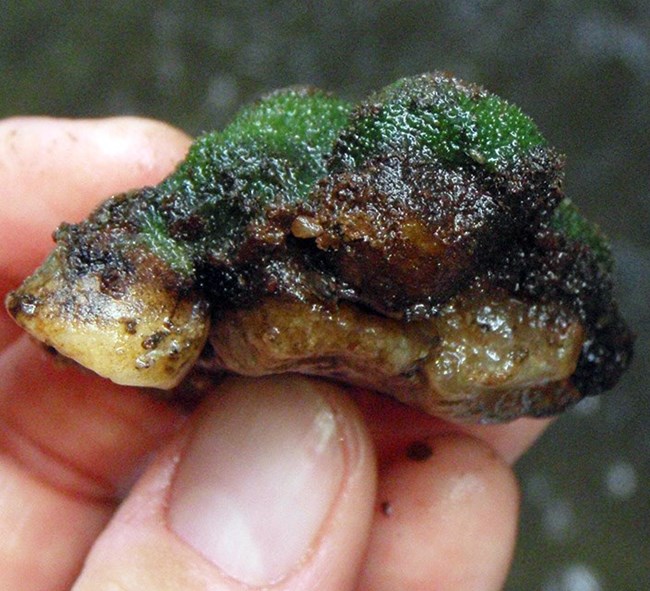Last updated: August 17, 2021
Article
Aquatic Invertebrate Monitoring at George Washington Carver National Monument

Bob Hendricks
Why Monitor Aquatic Invertebrates?
Aquatic invertebrates, such as insect larvae, worms, crayfish, snails, and other animals without backbones, can tell us a lot about water quality in the streams they live in! They are a diverse group of animals that often react strongly and predictably to changing water conditions. Some species can live in poor-quality water, while others need cleaner water to survive. Aquatic invertebrate communities can usually tell us more about stream water quality than traditional water sampling can.
Three streams meander through George Washington Carver National Monument: Carver Creek, Williams Branch, and Harkins Branch. While these streams are protected within the park, they are threatened by pollution and other land use disturbances outside the park's boundary. The Heartland Inventory and Monitoring Network monitors aquatic invertebrates in these park streams as an early warning system for potential water quality problems. Knowing what species are present and their tolerance levels to pollution and other disturbances tells us how the streams are doing.
(Photography by Bob Hendricks/Flickr/CC by-SA-2.0; cropped)

NPS
How Do We Monitor Them?
Scientists use a special net called a Surber Stream Bottom Sampler to collect invertebrates in each of the three streams on the park from May to June. We keep track of the number of different types of invertebrates and how tolerant they are to pollution.
In the 24 hours prior to invertebrate sampling, we take standard water quality measurements, such as temperature, pH (how acidic or alkaline the water is), and turbidity (water cloudiness). We also measure stream flow and depth and record information on algae, aquatic vegetation, and other streambed characteristics.

NPS

NPS
How Are Park Streams Doing? (2005–2016)
The rich aquatic invertebrate communities in Carver Creek, Harkins Branch, and Williams Branch indicate that the streams are in good condition. Rare and environmentally sensitive species were present in all three streams. Standard water quality measurements all fell within the acceptable limits as well. We will continue to monitor aquatic invertebrates in park streams to get an early warning if there are changes in water quality.

NPS/Tonya Watts
Did You Know?
Freshwater sponges live in the streams in George Washington Carver National Monument! These sponges are in the family Spongillidae, the only family of sponges that live in freshwater. Larvae of spongillaflies (Sisyra vicaria) live in and feed on these freshwater sponges, and both larvae and adult spongillaflies have been collected at the park. Freshwater sponges are very sensitive to pollutants, so their presence in park streams is a good indicator of high water quality and lack of stream disturbances. Also present in the park are robust populations of caddisflies that are sensitive to disturbance.
For More Information
Check back later for updates. We will update this page as we gather more information.
Visit the Heartland Inventory and Monitoring Network website.
